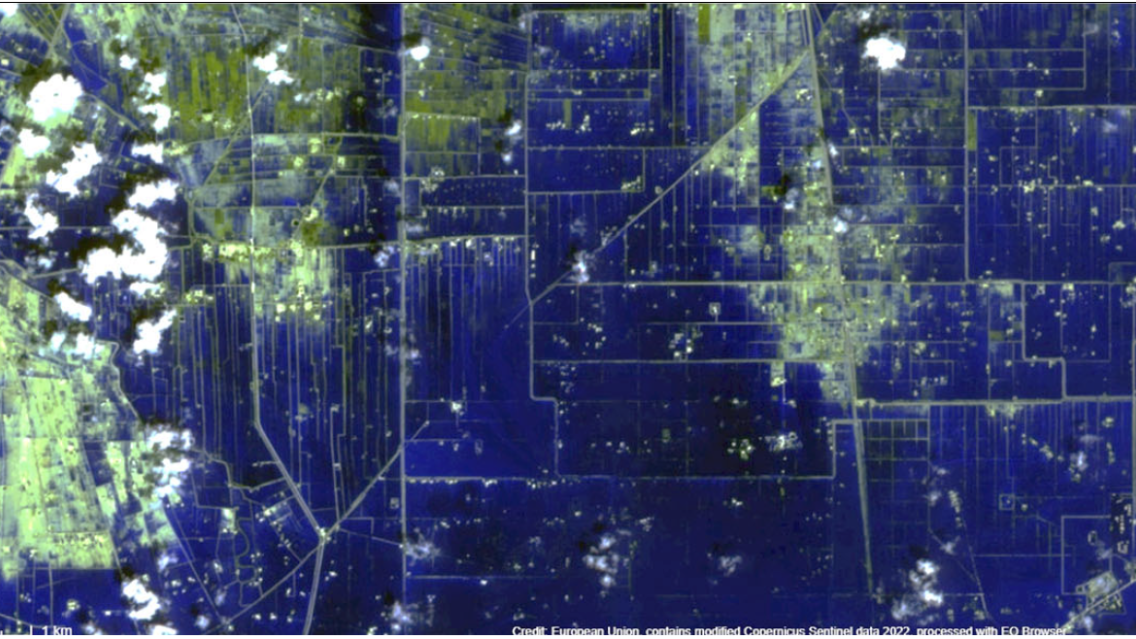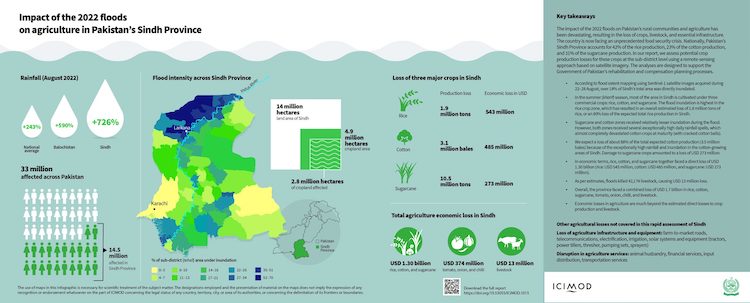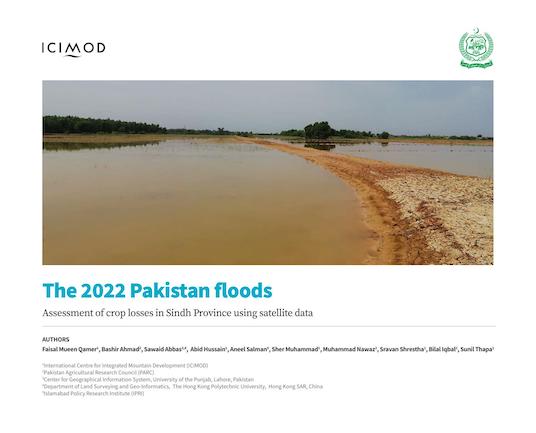Impact of the 2022 floods on agriculture in Pakistan's Sindh Province

Written by Faisal M. Qamer of SERVIR HKH/ICIMOD. This article was originally featured on SERVIR HKH's website. Click here to go to the original post.

The floods inundated 4.9 million hectares of cropland in Sindh Province. ICIMOD and PARC researchers
mapped the percentage of sub-district (tehsil) area under inundation in Sindh.
The impact of the 2022 floods on Pakistan’s rural communities and agriculture has been devastating, resulting in the loss of crops, livestock, and essential infrastructure. The country is now facing an unprecedented food security crisis. Nationally, Pakistan’s Sindh Province accounts for 42% of the rice production, 23% of the cotton production, and 31% of the sugarcane production. In our report, we assess potential crop production losses for these crops at the sub-district level using a remote-sensing approach. The analyses are designed to support the Government of Pakistan’s rehabilitation and compensation planning processes.
Assessment Methods for Flood Inundation
Cropland condition in Larkana District during normal (3 August 2022) and flooded (28 August 2022) periods.
For this assessment, we used Sentinel-1 SAR satellite data, acquired between 22 and 28 August 2022. We employed a combination of machine learning and decision tree rules to identify flood-inundated areas in Pakistan's complex topography. We derived land use and land cover data for the flood damage assessment using remote sensing and population datasets from government census statistics. We also produced detailed flood extent maps and aggregated flood and population intensity maps for the identification of hotspots and visualisation for effective communication.
Crop Damage Assessment Method
We used Sentinel-2 optical satellite data acquired between 25 and 31 August 2022 to assess primary crop conditions. We utilized crop production estimates published by the Pakistan Bureau of Statistics to estimate crop production losses. We also evaluated crop phenology patterns indicating critical crop development phases where greenness rapidly increases from early to the end of August. Based on these observations, we developed a maximum normalised difference vegetation index composite image of 25–31 August for 2021 and 2022 for comparative assessment. We then developed a normalised difference vegetation index difference map to estimate and categorise the comparative losses in greenness over the croplands or cultivated areas. We performed an overlay analysis with the flood inundation maps to further verify the intensity of the damage observed from the vegetation conditions of crop areas. We aggregated the vegetation anomalies at the subdistrict (tehsil) and district levels to further calculate the production losses.
- According to flood extent mapping using Sentinel-1 satellite images acquired during 22–28 August, over 18% of Sindh’s total area was directly inundated.
- In the summer (kharif) season, most of the area in Sindh is cultivated under three commercial crops: rice, cotton, and sugarcane. The flood inundation is highest in the rice crop zone, which has resulted in an overall estimated loss of 1.8 million tons of rice, or an 80% loss of the expected total rice production in Sindh.
- Sugarcane and cotton zones received relatively lesser inundation during the flood. However, both zones received several exceptionally high daily rainfall spells, which almost completely devastated cotton crops at maturity (with cracked cotton balls).
- We expect a loss of about 88% of the total expected cotton production (3.5 million bales) because of the exceptionally high rainfall and inundation in the cotton-growing areas of Sindh. Damage to sugarcane crops amounted to a loss of USD 273 million.
- In economic terms, rice, cotton, and sugarcane together faced a direct loss of USD 1.30 billion (rice: USD 543 million, cotton: USD 485 million, and sugarcane: USD 273 million).
- As per estimates, floods killed 42,174 livestock, causing USD 13 million loss.
- Overall, the province faced a combined loss of USD 1.7 billion in rice, cotton, sugarcane, tomato, onion, chili, and livestock.
- Economic losses in agriculture are much beyond the estimated direct losses to crop production and livestock.


